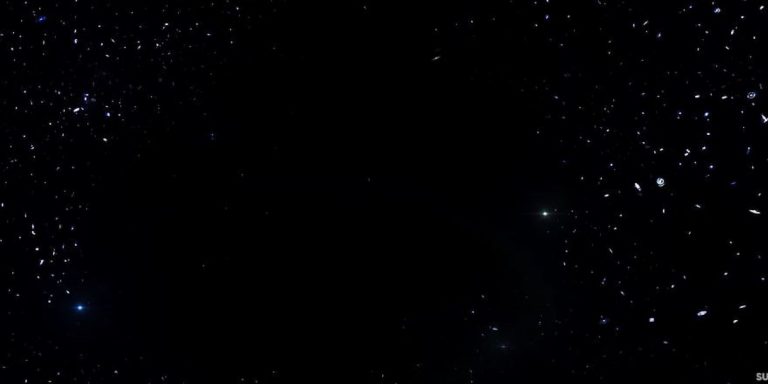What Lies Beyond the Milky Way: A Journey into the Cosmic Abyss
Introduction: Peering into the Vastness of Space
In the vast expanse of the universe, galaxies are like islands in an endless sea of darkness. Yet, beyond the familiar boundaries of our Milky Way lies a realm of mystery and wonder – the cosmic voids. These immense stretches of space, devoid of the familiar structures of galaxies and stars, hold secrets that challenge our understanding of the cosmos.
Exploring the Great Abyss: The Nature of Cosmic Voids
The Definition of Voids: Cosmic Deserts in Space
Cosmic voids are vast regions of space, spanning hundreds of millions of light-years, where the density of matter is significantly lower than the cosmic average. These voids, interspersed among the filaments and walls of galactic clusters, present a stark contrast to the densely populated regions of the universe.
The Structure of Voids: Walls and Filaments
Within the cosmic voids, thin walls and filaments delineate boundaries, separating one void from another. These structures, composed of sparse galactic matter, serve as the framework upon which the cosmic voids are built.
The Local Void: A Window into the Cosmic Abyss
Overview of the Local Void
The Local Void, situated near our Milky Way galaxy, is one of the most well-studied cosmic voids. Spanning approximately 150 million light-years in diameter, this void presents astronomers with a unique opportunity to study the dynamics of voids and their impact on galactic evolution.
Galactic Features within the Local Void
Despite its emptiness, the Local Void is not devoid of celestial objects. Within its boundaries, astronomers have discovered galaxies such as NGC 6503, a spiral galaxy characterized by its vibrant hues and active star-forming regions. These galaxies offer insights into the interplay between voids and galactic evolution.
Unveiling the Mysteries of Cosmic Voids: The KBC Void
The Discovery of the KBC Void
In 2013, astronomers made a groundbreaking discovery: the KBC Void, the largest supervoid known to science. With a diameter exceeding two billion light-years, this void challenges our understanding of cosmic structure and evolution.
Implications of the KBC Void
The existence of such a vast void has profound implications for our understanding of the universe. Its sheer size raises questions about the mechanisms that govern the formation and evolution of cosmic voids, prompting astronomers to reevaluate existing cosmological models.
The Enigma of the CMB Cold Spot: Unraveling Cosmic Anomalies
Introduction to the CMB Cold Spot
One of the most perplexing cosmic anomalies is the CMB Cold Spot, a region of space where the cosmic microwave background radiation is significantly cooler than its surroundings. This enigmatic feature, spanning up to a billion light-years in diameter, has puzzled astronomers for decades.
Theories and Explanations
Several theories have been proposed to explain the origin of the CMB Cold Spot, ranging from gravitational effects to the presence of exotic forms of matter. Yet, despite extensive study, the true nature of this cosmic anomaly remains elusive, highlighting the complexity of the universe.
Conclusion: Navigating the Cosmic Unknown
As we peer into the depths of the universe, we are confronted with mysteries that defy explanation. Cosmic voids, with their vastness and emptiness, remind us of the boundless complexity of the cosmos. Yet, it is in the exploration of these unknown realms that we may ultimately uncover the secrets of the universe.
FAQs:
1. Are cosmic voids dangerous to space travelers?
- Cosmic voids pose no direct threat to space travelers, as they are devoid of significant gravitational or radiation hazards. However, navigating through these vast regions of emptiness would present logistical challenges.
2. Could there be undiscovered celestial objects within cosmic voids?
- While cosmic voids are primarily empty, there is a possibility of undiscovered celestial objects such as dwarf galaxies or gas clouds hiding within their depths. Future observational studies may reveal more about the contents of voids.
3. How do cosmic voids influence the formation of galaxies?
- Cosmic voids create environments with low matter density, affecting the gravitational interactions that govern galactic formation. Galaxies within voids may experience slower rates of star formation compared to those in denser regions.
4. Are cosmic voids expanding?
- Like the rest of the universe, cosmic voids are subject to the effects of cosmic expansion. Over time, voids may gradually increase in size as the universe continues to expand.
5. What technological advancements are needed to further study cosmic voids?
- Continued advancements in telescopes and observational techniques, particularly in the infrared and microwave spectra, will enhance our ability to study cosmic voids and unravel their mysteries.

